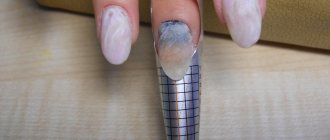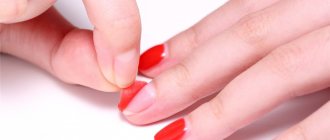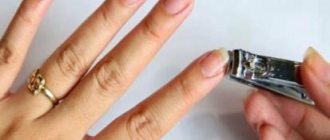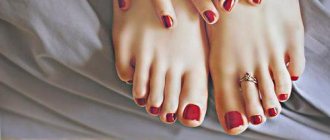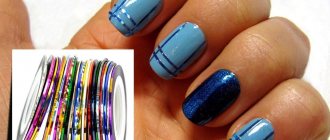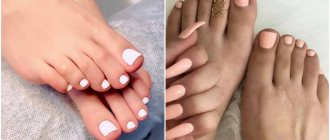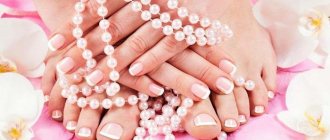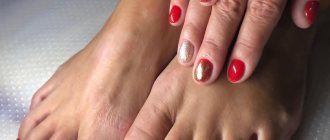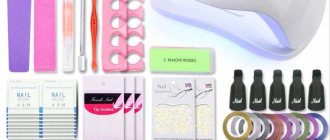Dermatologists believe that salon manicure and pedicure are not really necessary for nails; simple procedures at home will suffice for healthy nails. But even here you can screw up. We'll tell you how to disinfect scissors, why you shouldn't touch the cuticles, and how to avoid infections on your nails.
Even if you are used to doing manicures and pedicures in a salon, it will be useful to know how to do it all yourself correctly. It is important to monitor the condition of your nails - this will help prevent infections, ingrown nails and professional mistakes.
How to cut your nails correctly
Check if the tools are ready
Before you do anything to your nails, make sure your tools are sharp and clean enough.
Firstly, scissors or nippers (in a clever way - knipser!) should belong only to you - in terms of personal hygiene, there is no shame in being greedy. They also need to be disinfected. Let the tools sit in a bowl of alcohol (70-90 degrees), then clean them with a brush, rinse them in hot water and be sure to dry them.
Secondly, they need to be sharpened. If the tools are dull, they will have difficulty cutting your nails and may even damage the nail plate. Carefully cutting off hangnails with dull scissors will also not work - you are more likely to make new ones by approaching a piece of skin near the nail. You can sharpen tools for manicure and pedicure at home using sandpaper. Or entrust this matter to a master.
❓What to buy if you are going to do your own manicure
Beauty shop: 10 products for manicure at home
Don't shave your legs before cutting your toenails
Doctors from the Association of American Dermatologists advise shaving your lower legs after a pedicure. Otherwise, a small focus of infection may appear, which can spread to the nail.
Steam your nails before cutting
It is more convenient and easier to cut your nails after a bath or shower, when they are softened. It’s enough to just hold your feet under warm water for a couple of minutes and start cutting. Or soak your feet and hands in warm water baths for half an hour to relax and feel like you're in a spa. Throw on a robe and apply the mask to your face to enhance the effect.
The Association of American Dermatologists has its own YouTube channel where you can see how to properly care for your skin, hair and nails. How to use wire cutters correctly is in this video.
On your legs, cut straight and do not round the ends.
It is better to give the nails a square shape, and do not cut off the ends with clippers or scissors. If you cut your nails round and cut them deep, they can grow and dig into your skin. Ingrown toenails are unsightly, can cause inflammation, and can even land you in the surgeon's office. An ingrown toenail can even be removed if an infection develops. But if the lesion is small, you can get by by removing a small piece and using anti-inflammatory baths.
Finally, file your nails in one direction with a file.
A nail file is not needed to give your nails a beautiful shape. It removes roughness. This is to prevent you from scratching yourself or others, or from snagging on clothing. It is important to cut in one direction. It's useless to drive back and forth. This may cause the nail to become thinner or split.
Symptoms and prevention of foot fungus
Foot fungus can be the result of poor hygiene or a freak accident. Infections of this nature are always near or inside a person, manifesting themselves in a favorable situation. Fungal skin infections develop quickly and thrive best in warm, moist environments, which is why it's important to keep your feet dry.
The most common symptoms of foot fungus are itching and burning between the toes, red rashes, blisters and ulcers, and peeling. The problem may affect the foot, heel, space between the toes and the nail plate. At risk are people with reduced immunity, excessive sweating of the feet, as well as those who wear tight shoes made of artificial materials, or visit a public bathhouse and swimming pool.
To combat the fungus, it is best to consult a doctor who will diagnose and select treatment. The process can be long and expensive, so we recommend that everyone take preventive measures and protect themselves from such problems.
Follow these tips to prevent fungus:
- Wash your feet regularly with warm water and soap.
- Do not walk barefoot in public areas.
- Buy shoes that fit in a size that you won't have to break in.
- Don't wear shoes without socks, and change your socks daily.
- Do not share a towel, slippers, scissors or other manicure and pedicure supplies with other people.
- If you get a pedicure at a salon, make sure all tools are properly disinfected.
- Take foot baths.
How to care for your cuticle
Dermatologists are against cuticle cutting
Dermatologists from the American Association urge not to touch the cuticles. After all, it protects nails from bacteria and germs. Without it, the nail is always in danger. If after a manicure at home there is no inflammation on your hands and feet, thank the sterilized instrument and active immunity.
Doctors also do not advise pushing back the cuticle - this can injure the root of the nail and provoke paronychia. This is when bacteria or fungi enter the damaged area of the nail, and this causes inflammation. It seems that the combination manicure popular in salons, which is called “Russian” abroad, is not very beneficial for the health of nails.
The cuticle does not need to be trimmed, but can be removed using special means.
And yet, without cuticles, nails look neater. You can get rid of it, but instead of scissors you will need cuticle remover and orange sticks. This is how an unedged manicure is done.
Cuticle removers remove the layer of dead skin. There are two ways to do this - using soft and aggressive components. Mild products contain AHA acids, aggressive products contain alkalis. Acidic ones irritate and dry the skin less, so it is better to choose them.

